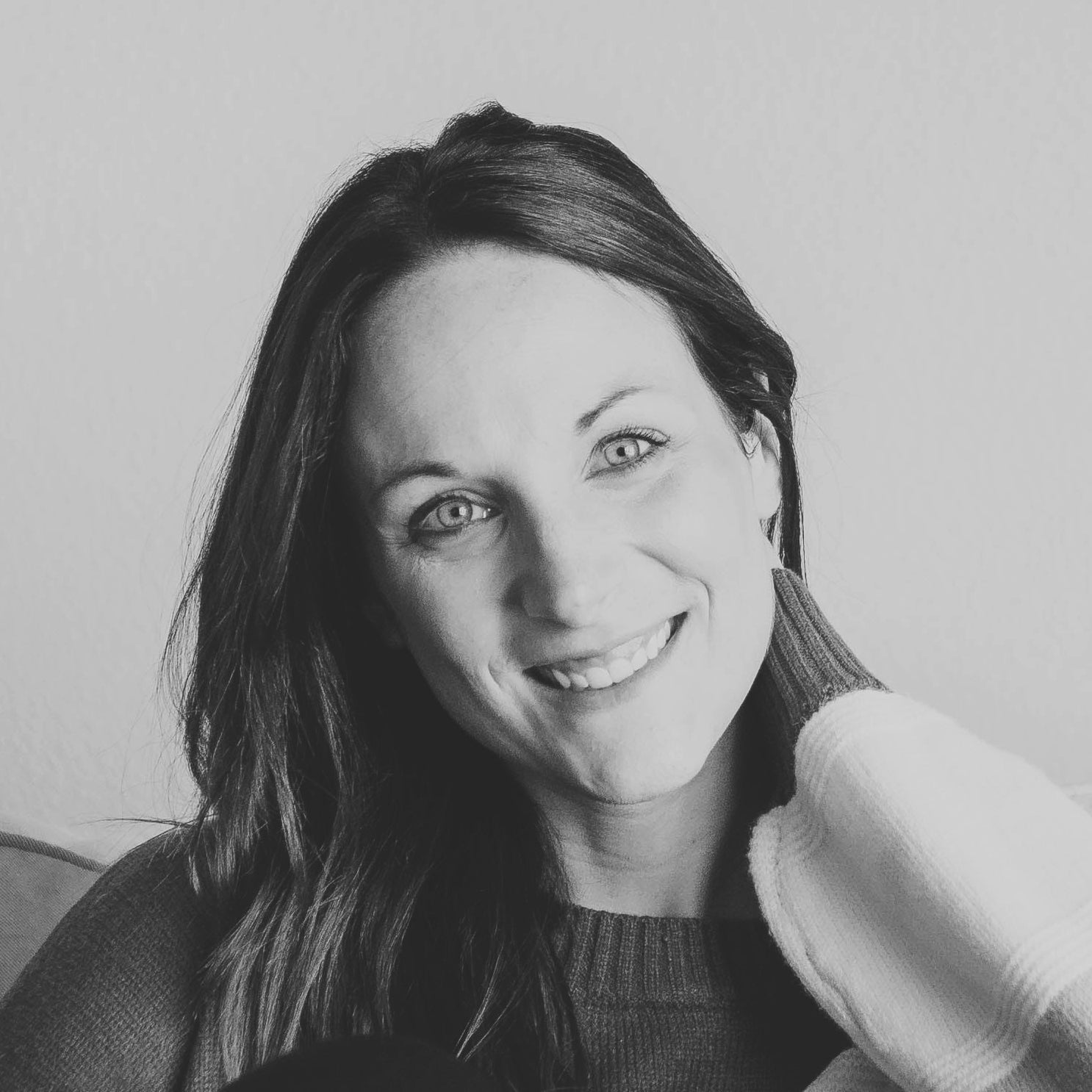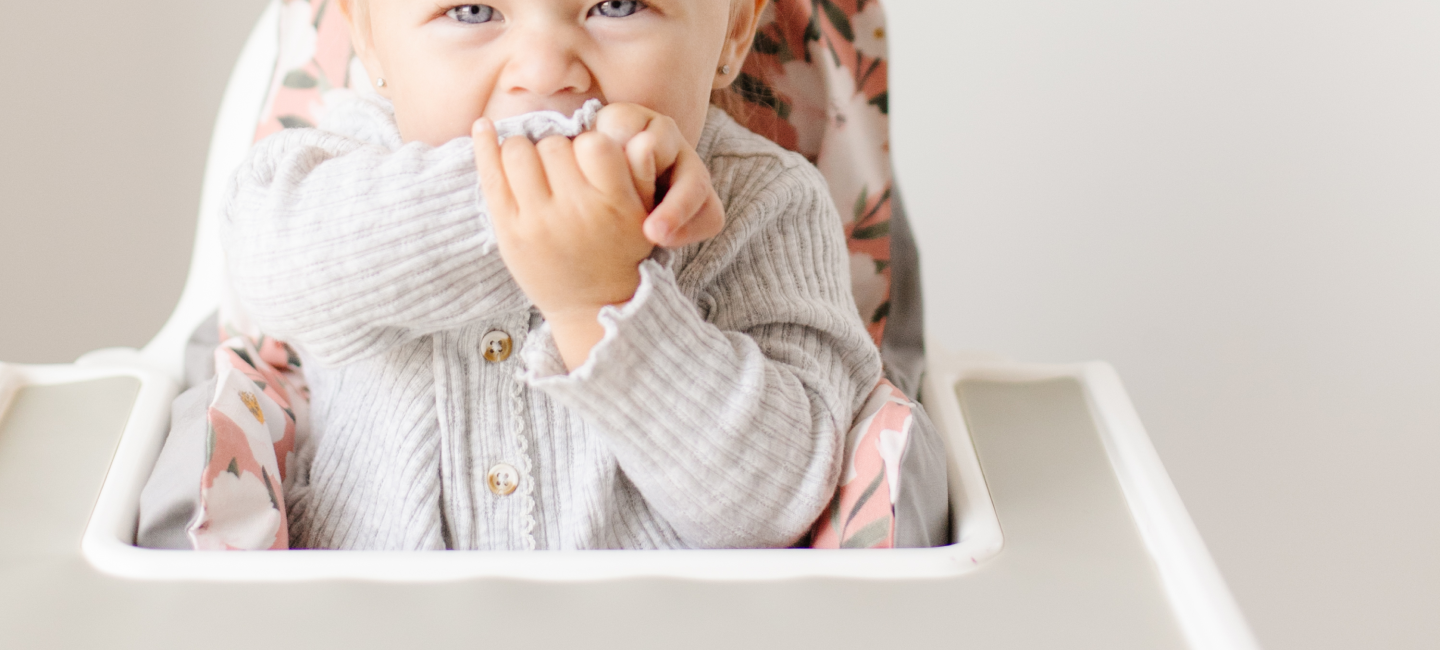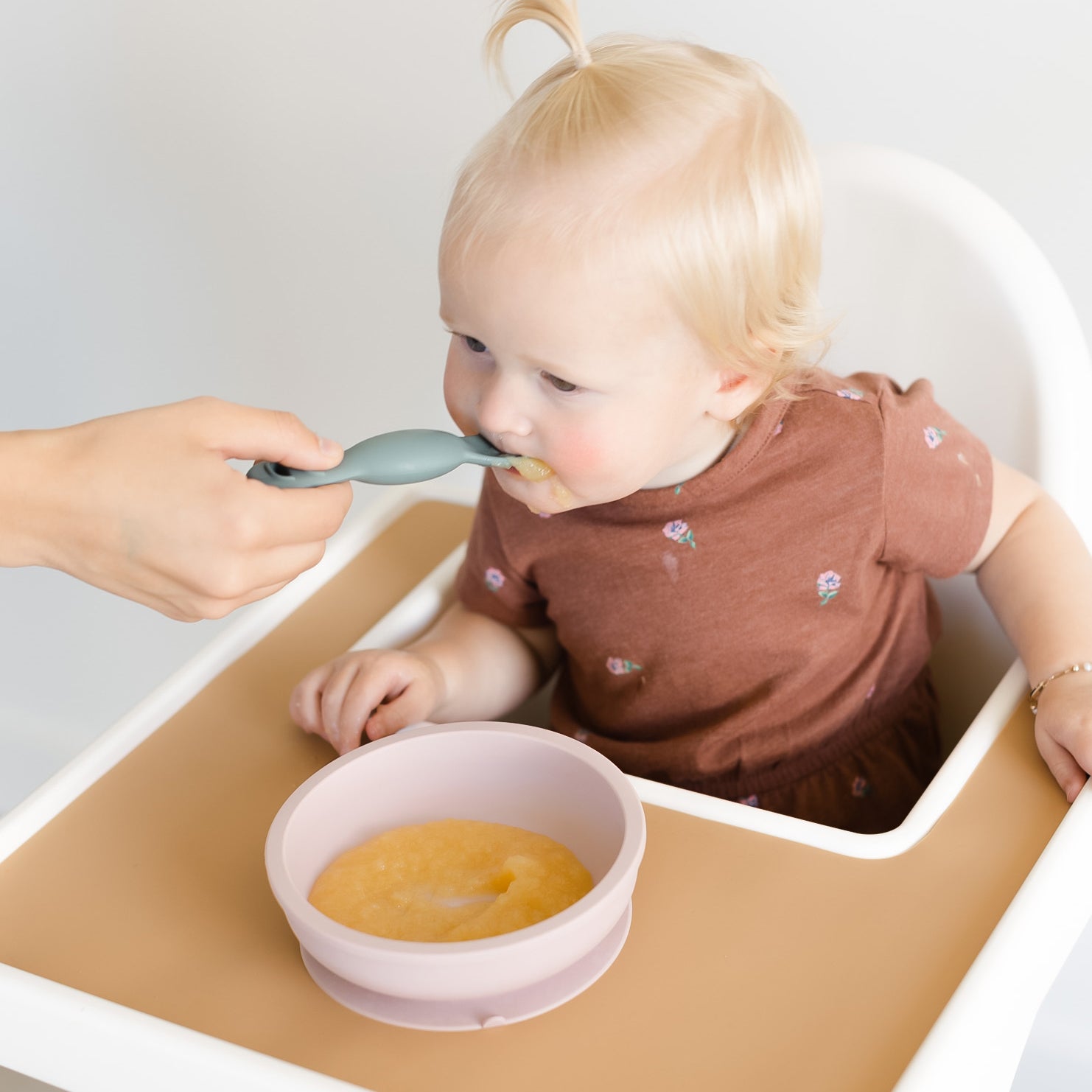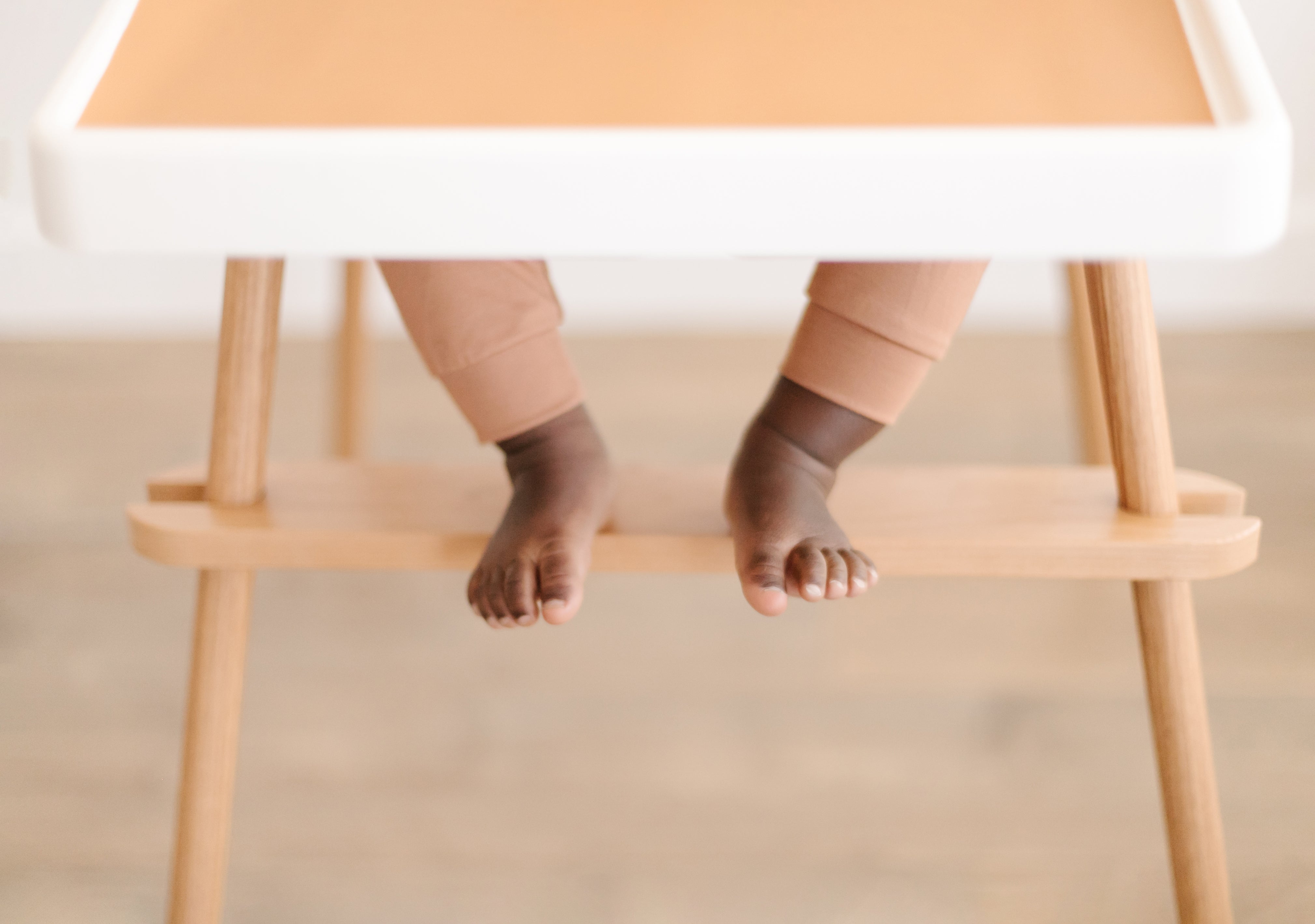safe feeding
position
did you know
Problems like fussiness at the table, refusing to eat and pickiness can often be traced back to the highchair
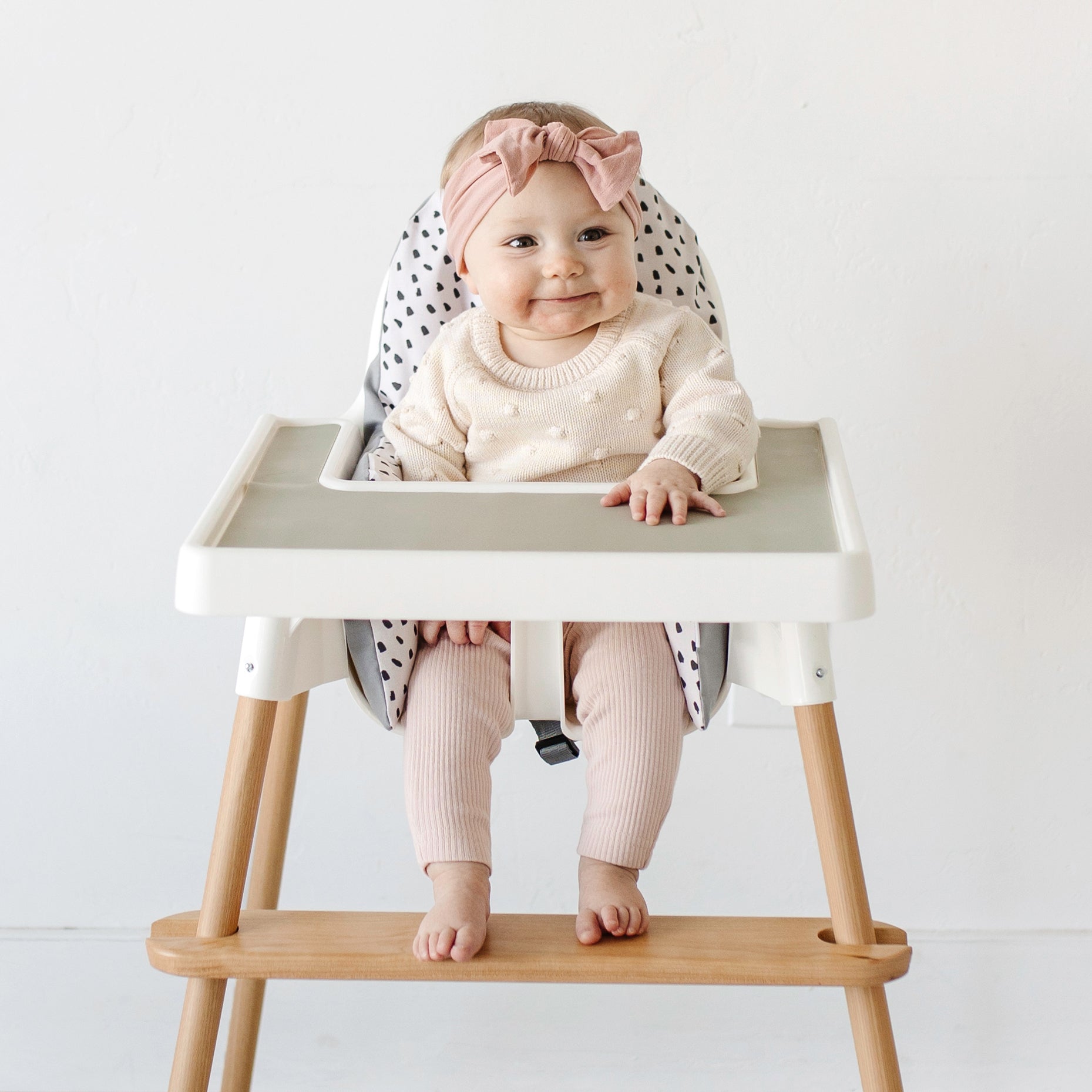
What To Look For When Buying A Highchair
Proper positioning provides comfort, improves focus and facilitates a safe swallow. Here's what feeding experts recommend:
01
upright back
Never reclined, shoulders should be over hips in a 90 degree angle.
02
back cushion
Allows baby to sit closer to tray and be an active participant in the meal.
03
snug seat base
Avoid deep seats or use a cushion so knees are bent at the edge of the seat.

04
side support
Provides stability so babies don’t need to concentrate on sitting upright.
05
footrest
Offers comfort and stability so there is less fidgeting and more focus.
it makes sense
When you are comfortably seated in a chair, you're able to sit longer.
Alternatively, if you don't feel stable, you'll be too distracted to eat.

When researching proper eating posture, there are two things you’ll hear repeatedly
90/90/90 rule
This just means you want baby’s hips, knees and ankles all at 90 degree angles
Proximal STABILITY before distal MOBILITY
In the therapy world, this means the more stable your baby’s trunk is, the easier it is for them to use their hands and mouth.
expert advice
why are footrests important?
Dangling legs are destabilizing and, for early eaters, can promote a slumping posture that increases choking risk. Your baby’s ability to rest his or her feet flat on a hard surface is key for promoting a safe swallow.
why are deep seats a problem?
If the hips are not in a good position, it can create changes in head control, breathing and mouth control. A supportive seating arrangement allows babies to focus on important feeding skills such as picking up foods, bringing foods to their mouths, chewing, and swallowing.
why is stability so important?
Kids need stability when practicing any fine motor skills, including swallowing! A stable trunk is what makes the swallow work in a timely fashion, closing off the airway to let liquids trickle right past the route to the lungs.

